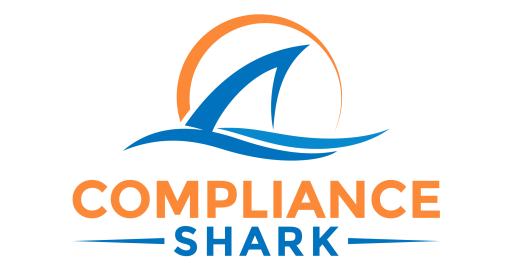The WHO’s handbook on HAIs 📖😦
Hey there, it's Greg.
We talk a lot about infection prevention, linen safety, and compliance in this, and well, every newsletter. And for good reason! Every hospital linen that touches a person in our community can either protect them or put them at risk.
So when the World Health Organization (WHO) publishes a major handbook on healthcare-associated infections (HAIs), you better believe I’m paying attention.
This resource, which I have studied for quite some time and referenced when working on several projects since, “Surveillance of Healthcare-Associated Infections at National and Facility Levels: Practical Handbook”, lays out clear, standardized guidelines for tracking and reducing HAIs. The best part is that it’s all based on real-world observations and the latest evidence of HAI surveillance. If you haven’t taken a look yet, it’s worth your time.
But what exactly does this handbook mean for hospitals, laundries, and patient safety? Let’s break it down.
Surveillance of HAIs, and Why it Matters
For years, hospitals have struggled with inconsistent tracking and reporting of HAIs, making prevention efforts more challenging. The WHO’s new handbook addresses this by providing clear, standardized methods to improve infection surveillance.
It focuses on the four most common and high-risk HAIs:
Bloodstream infections
Urinary tract infections
Surgical site infections
Pneumonia
Beyond defining these infections, the handbook outlines six essential elements of effective HAI surveillance:
Surveillance planning
Data collection
Analysis
Interpretation
Communication
Monitoring and evaluation
But the thing is, HAI surveillance is not evenly implemented worldwide. The WHO’s global report found:
High-income countries typically have well-established HAI surveillance systems, but still face data inconsistencies and underreporting.
Low- and middle-income countries (LMICs) struggle with limited resources, fewer trained personnel, and weak reporting systems, making infection tracking difficult.
In small hospitals, HAI surveillance is often less comprehensive due to staffing and funding constraints, while larger hospitals are more likely to have dedicated infection control teams and better data systems.
By setting global benchmarks, WHO aims to:
Ensure infections are tracked consistently across all healthcare settings
Use data to identify patterns and improve infection prevention strategies
Allocate resources more effectively to strengthen infection control efforts, especially in resource-limited settings
While these guidelines are critical for ICUs and operating rooms, they apply to every part of the hospital, including support areas like laundry services. After all, if linens aren’t monitored like other infection risks, how can hospitals be sure they’re safe?
Now, this brings us to another critical question – this time, it’s not rhetorical:
Is Your Laundry Following Infection Prevention Best Practices?
One of the biggest blind spots in infection surveillance is what happens to healthcare linen before it reaches a patient’s bed. Hospitals may track hand hygiene and surgical site infections, but how often do they audit their laundry processes – whether handled in-house, outsourced, or through a hybrid model – for infection risks?
We’ve talked a lot about the infection risks that can stem from subpar linen programs:
If clean and soiled linens aren’t strictly separated, contamination can spread.
If laundry equipment isn’t properly maintained, pathogens can survive the wash.
If linen handling procedures aren’t followed, hospitals are introducing risk.
I break this down in my book, “Linen Saves Lives: How Linen Compliance Can Prevent Infection, Improve Patient Safety, and Maximize Profits,” where I share real-world scenarios like this one:
In the middle area is a patient who arrived with a sudden fever, headache, stiff neck, nausea, vomiting, sensitivity to light, and altered mental status. The ED team tests the patient for meningococcal meningitis, a highly contagious and dangerous infection. A few hours later, the results come back positive, and the patient is moved to an isolation unit for treatment and to protect other patients and staff.
Throughout this time, several doctors, nurses, and laboratory technicians have entered the exam room, pulling the cubicle curtains open on the way in and pulling them closed on the way out. Family members venture in and out, too, grabbing the same curtains. Did anyone entering have unwashed hands? Did someone unknowingly carry germs? The curtains became high-traffic touchpoints, exposed to every potential contaminant.
Just as the WHO’s handbook offers guidelines and benchmarks on surveillance of HAIs, my book outlines how linen management methods could make or break your infection prevention efforts – and the steps you need to take to get your linen program under control.
Final Thought
This WHO handbook is a big deal because it takes case studies of successful infection prevention programs and HAI surveillance methods to demonstrate practices and a data-driven roadmap that actually works, and can help with improving infection surveillance and reduce the burden of HAIs all around the world.
In “Linen Saves Lives,” I dive into how poorly handled linens contribute to HAIs, what hospitals should look for in their linen provider, and best practices to ensure linen safety and compliance.
Just check out what one surgeon had to say after reading a copy:
"In surgery, every detail matters — including linen. ‘Linen Saves Lives’ exposes a critical but often overlooked component of infection prevention and patient safety. Gregory Gicewicz’s insights are essential for every surgeon and hospital leader looking to reduce surgical site infections and improve patient outcomes."
— Dr. Sean Rocket, MD, Orthopedic Surgeon, Orthopedics New England - President, Medical Director, CrossFit Games
If your hospital wants to get ahead of these WHO recommendations, let’s talk. I’ve helped dozens of hospitals, large and small across the country, improve their linen safety practices, cut costs, and boost compliance, and I’d love to help yours too.
Until next time,
Greg


